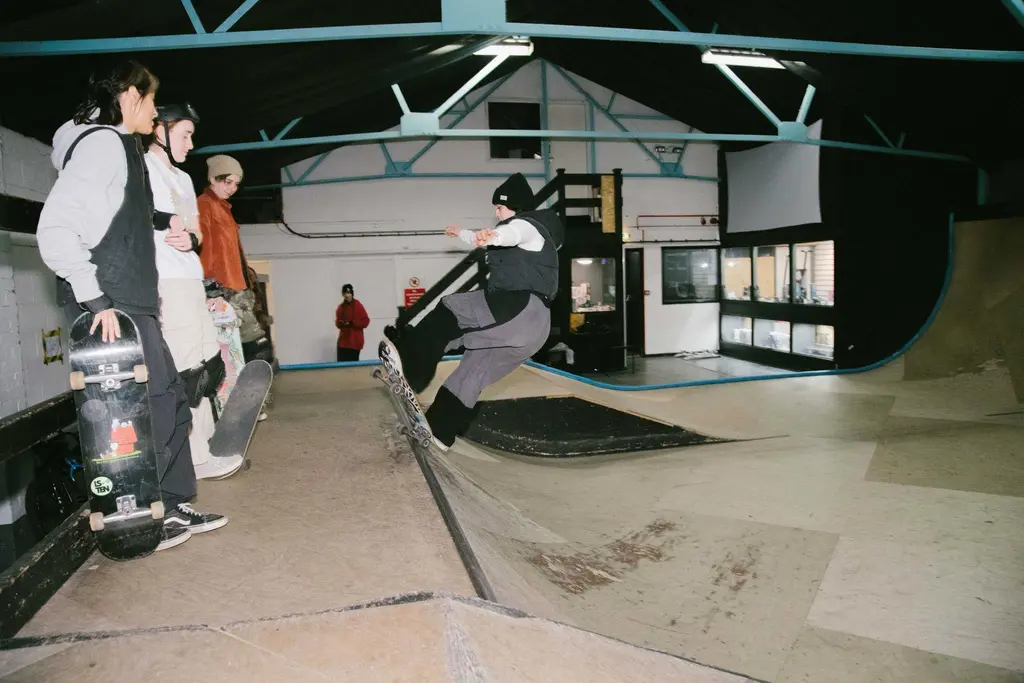The legendary trans artist & illustrator behind Drag magazine
- Text by Miss Rosen
- Photography by Mariette Pathy Allen

While visiting New Orleans for Mardi Gras back in 1978, photographer Mariette Pathy Allen received the invitation of a lifetime: an opportunity to have breakfast with a dozen crossdressers fully turned out in their finest gowns.
After the meal they gathered around the hotel pool for a group portrait. “As I took my first picture, everybody was looking in a different direction, except Vicky West, who was looking straight back at me,” Allen remembers. “I had an incredible feeling, like I wasn't looking at a man or a woman, but somehow the essence of a human being. And I thought to myself, I have to have this person in my life.”
Allen’s silent prayer was delivered on arrival: West lived 20 blocks for Allen on Manhattan’s Upper West Side. “We became friends, and she was my mentor. Vicky took me wherever she went in her trans world,” Allen says.

West lived an extraordinary life as Dirk — a Cornell University graduate, US Army veteran, and executive art director at a prestigious New York art book publishing house, and as Vicky — co-founder and art director of Drag Magazine in 1971 alongside Lee Brewster and Bebe Scarpe. West would work on the magazine until 1983 when it shuttered.
After West died suddenly in 2005 at age 70, Allen was invited to the home, and asked to take any memento of her lifelong friend. Allen discovered two Saks Fifth Avenue shopping bags filled with art Vicky made during 1970s and ‘80s. It is only now with the publication of I Was The Girl: Art by Vicky West (Matte Editions), that West’s life and legacy can be celebrated in full. The book brings together West’s luminous illustrations of fantasy, femininity, fashion, and alongside 18 photographs of Vicky made by Allen throughout their friendship.

“Vicky was a very well educated, smart, creative person with a good sense of humour and was very fun loving, although she could be serious,” Allen says. “She had a great sense of style as both a man and as a woman, which is somewhat unusual with cross dressers, because they tended to demean their male side or refer to their male persona as their ugly twin.”
In West, Dirk and Vicky coexisted with equal aplomb, embodying the very art of living. But one thing West did not have was family of her own. Allen understood and brought her into the fold.
“When I first began photographing crossdressers, I wanted to show they were relatable people. They weren't the monsters, freaks and dangerous people as they were portrayed by the media and other photographers,” she says. “I wanted to show them with their families, if that was possible.”
As family friend, Vicky readily became a part of Allen’s personal world. On one occasion Allen and her late husband hosted a white party for their friends. Vicky arrived in a wrap dress, strappy sandals, a flower tucked in her ear, and taught Allen’s daughters, then three and six, how to do the French Cancan on the lawn.
“My kids were not afraid of Vicky; they were having a good time,” says Allen. “I think she was uniquely successful in life because she enjoyed the best of both worlds.”


Latest on Huck

Clubbing is good for your health, according to neuroscientists
We Become One — A new documentary explores the positive effects that dance music and shared musical experiences can have on the human brain.
Written by: Zahra Onsori

In England’s rural north, skateboarding is femme
Zine scene — A new project from visual artist Juliet Klottrup, ‘Skate Like a Lass’, spotlights the FLINTA+ collectives who are redefining what it means to be a skater.
Written by: Zahra Onsori

Donald Trump says that “everything is computer” – does he have a point?
Huck’s March dispatch — As AI creeps increasingly into our daily lives and our attention spans are lost to social media content, newsletter columnist Emma Garland unpicks the US President’s eyebrow-raising turn of phrase at a White House car show.
Written by: Emma Garland

How the ’70s radicalised the landscape of photography
The ’70s Lens — Half a century ago, visionary photographers including Nan Goldin, Joel Meyerowitz and Larry Sultan pushed the envelope of what was possible in image-making, blurring the boundaries between high and low art. A new exhibition revisits the era.
Written by: Miss Rosen

The inner-city riding club serving Newcastle’s youth
Stepney Western — Harry Lawson’s new experimental documentary sets up a Western film in the English North East, by focusing on a stables that also functions as a charity for disadvantaged young people.
Written by: Isaac Muk

The British intimacy of ‘the afters’
Not Going Home — In 1998, photographer Mischa Haller travelled to nightclubs just as their doors were shutting and dancers streamed out onto the streets, capturing the country’s partying youth in the early morning haze.
Written by: Ella Glossop



